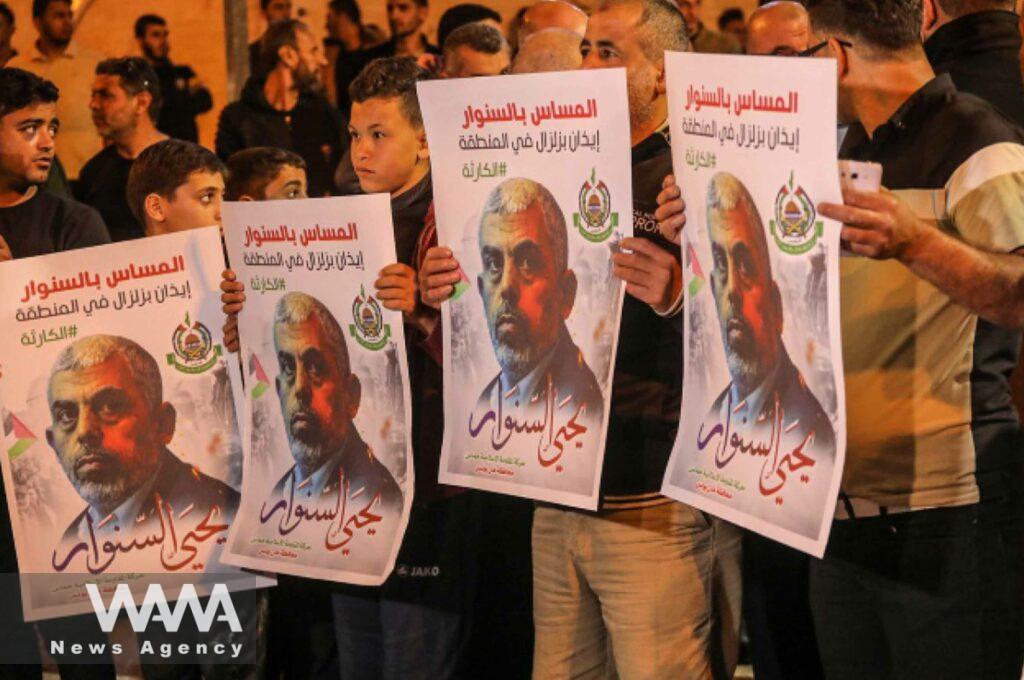Sinwar: The Fighter Who Humiliated Netanyahu
WANA (Oct 21) – Last Wednesday, during a combat patrol in the Tel Sultan area on the outskirts of Rafah, Israeli drones detected movements of three Palestinian fighters. The drones engaged the fighters, and with the intervention of Israeli army tanks targeting the building where these fighters were stationed, alongside the use of quadcopters, they entered the building and found the last injured fighter still resisting. A final tank shot resulted in the death of this last Palestinian fighter inside the building.
Upon examining the bodies of the deceased, the presence of Yahya Sinwar was discovered. To confirm his death, Israeli forces transported his body to Israeli facilities, and after 24 hours, they declared the killing of Yahya Sinwar—hero of Palestinian resistance and mastermind behind the major October 7 operation last year—as a major victory for the Israeli regime.

The Moment a Legend Was Born: Yahya Sinwar at the Heart of the Image
WANA (Oct 18) – Sometimes a single moment can change the course of history. What Israel presented to the world as a display of its power through the killing of Yahya Sinwar turned into a historical milestone; not for Israel’s military might, but for the creation of a legend in Sinwar. As one user […]
While Sinwar’s death is seen as a significant loss for Palestinians and the resistance forces, historical trends and the experiences of Palestinian and regional resistance organizations against Israel, as well as other colonial projects in the region, emphasize that with the “martyrdom” of their great leaders and commanders, the resistance only grows deeper, stronger, and more widespread on the battlefield.
The occupying regime and the U.S. have attempted to use this event to pressure the resistance in Gaza and the region into submission. U.S. Secretary of State Antony Blinken is expected to visit the region in the coming days, likely as part of a political ploy. However, the recent events have only reinforced the unity and resilience of all regional resistance groups.
Sheikh Naim Qassem, a senior member of Hezbollah in Lebanon, announced the strategy of wearing down Israel. Yesterday (Saturday), two strategic operations were carried out: one in northern Gaza (Jabalia) and another in Caesarea, near the northern Israeli city of Netanya, where Hamas and Hezbollah launched an attack on Netanyahu’s personal residence.

In Jabalia, despite a large-scale Israeli commando operation aimed at forcefully displacing the remaining Palestinian residents, resistance forces encircled a group of Golani Brigade commandos, prevented the advance of Israeli tanks, destroyed the building where the commandos were stationed, and inflicted casualties among them.
Hezbollah, for its part, fired a hundred missiles targeting the positions of five Israeli commando and operational brigades near the Lebanese border. In a heroic confrontation with Israeli units, they hit targets deep inside the occupying regime in areas like Safed, Tiberias, Haifa, and its surroundings, including a drone attack on Netanyahu’s residence.
Eyewitnesses near Netanyahu’s residence confirmed that, due to the Shabbat, Netanyahu and his wife were home at the time. The frantic arrival of special units from the national guard, rescue teams, military jets, and helicopters signaled Netanyahu’s presence in the residence. This incident has been deemed a significant security failure by military and media sources.

Why Yahya Sinwar?
WANA (Aug 07) – Many observers find the selection of Yahya Sinwar, the head of Hamas’ military wing, as the successor to Ismail Haniyeh and the new leader of Hamas to be unexpected and perhaps surprising. The choice of Sinwar carries several important points: 1. Unanimous Agreement: Sinwar was chosen with unanimous support, even […]
The clear message of this operation, regardless of its immediate outcome, is that Hezbollah’s strategy to exhaust and demoralize Israel has moved beyond military targets and intelligence centers. It now focuses on Israeli settlements and key figures, causing notable damage in military confrontations along the Lebanese border.
Even though Netanyahu has secured bunkers in his home and office to shield himself from resistance operations, the significance and impact of this event have sent shockwaves of fear throughout Israeli society, all the way up to the regime’s leaders. We are likely to witness Netanyahu’s trembling hands more than ever after this major operation in Caesarea. After all, the mastermind behind the war crimes committed in Gaza over the past year, and now in Lebanon, is none other than Netanyahu’s criminal gang in the Israeli cabinet, and they must pay the price.












